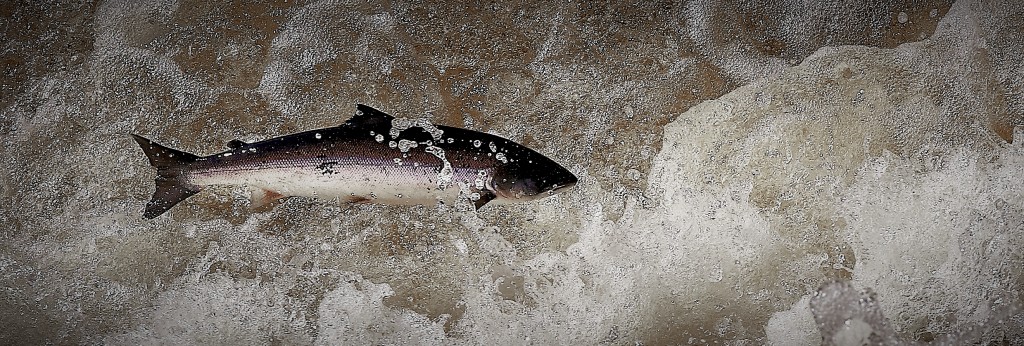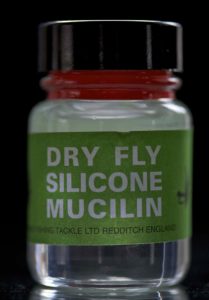Tricks on how to impregnate with dry fly silicone
F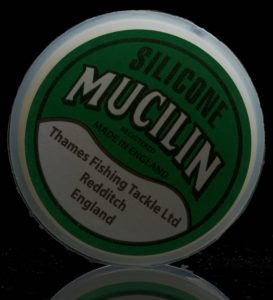
The right dry fly silicone – is the recipe.. to success
The way that our artificial flies present them self on the water is of great importance in our fishing… We want the fly to sit in the surface tension so to speak. To do so we need the fly to be well impregnated with water-repellent like silicone. Sins the late 1940`s anglers have used products containing silicone to keep their flies afloat. It comes in many shapes and we prefer to use a combination of a liquid solution and a paste version both containing some silicone…
The liquid version of dry fly silicone from Thames Fishing Tackle – Good for ground preparation of big deer hair flies
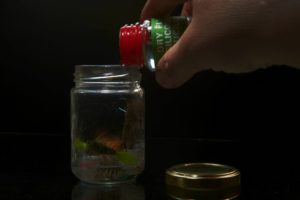
We have used a glass jar for this job. In this way, we will be able to prepare many flies at the same time
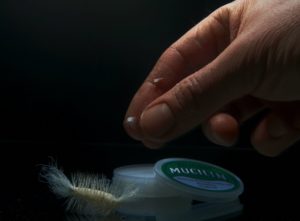
Prior to fishing, we will impregnate the flies with dry fly silicone ones again. We use Silicone Mucilin Paste. Make sure to dissolve the paste between your fingertips before adding it to the fly.
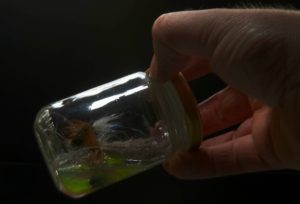
Here we use Silicone Mucilin from Thames Fishing Tackle. Hydrostop from Loon is also a product for this job Let the flies soak for 20 sec… Leave the flies to dry for at least 8 hours.
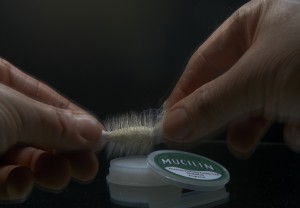
Take care to rub it well into the deer hair structure of the fly – * this will make the flies look somewhat translucent – something very important in the world of dry fly fishing
Translucent flies are killers
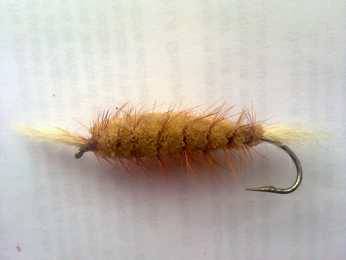
Many people ask us why we don´t make our Bombers with foam or other floating material? In fact, we have tried this with different fly patterns made with; Cork, Balsa-wood, Styrofoam, EVA Foam and at some point I even did a fly with a small glass cylinder but none of it worked properly and we soon returned to flies made from deer hair… There do not seem to be any shortcuts on this project…
Why is deer hair so special? Well! first of all, it seems like the deer hair (as most other hair material) has a natural ability to attract and deceive trout and salmon… It is like the concept of eating an animal with pelt isn’t that disagreeable with fish.
One very special Bomber Belonging to a UK angler I know – This fly has over time become very good because of: Wear and tear and multiple coatings of Muslin – All adding up to a translucent appearance that’s seemingly attractive to salmon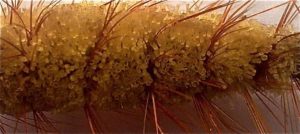
Dry flies made with deer hair will also become better and better with time – It is if the deer hair become hollow ! when used over and over again – Something I will try to prove through picture of detail – Detail section is from picture above of the super-Bomber
Note the hollowness of the hairs that gives the fly this see-through appearance … as seen on the close up of the deer hair body
Don’t get dry fly silicone or such stuff on your leader
Avoid getting products like Mucilin onto your leader the leader will end up showing up like a neon sign on the surface – and salmon will stay clear of your fly… A good idea is to prepare the flies with the Mucilin past prior to your fishing trip. When you have impregnated your flies leave them in a tempered area – so the Silicone can set in the flies and the solvent in the past can evaporate.

